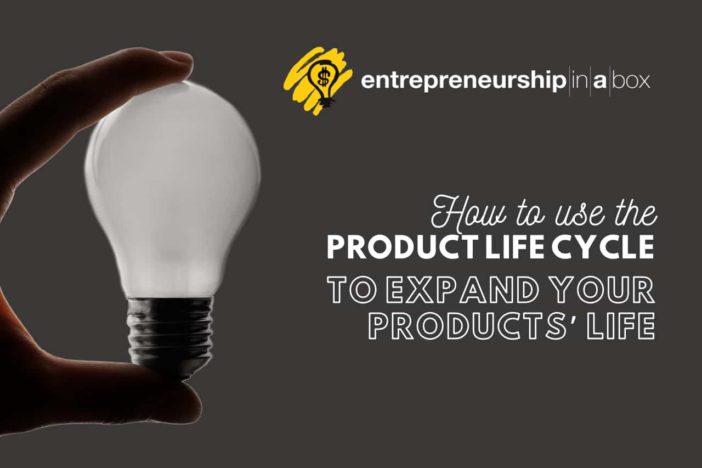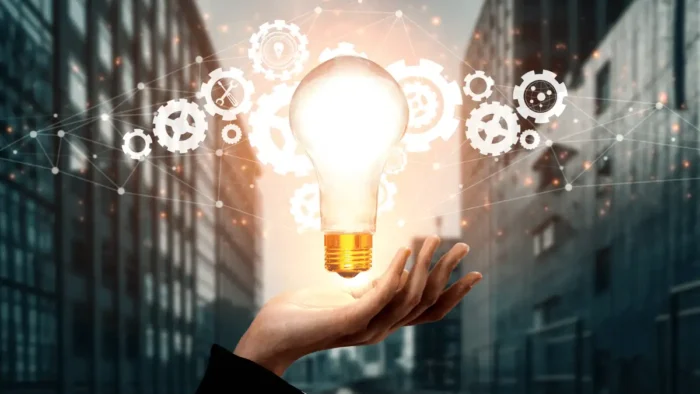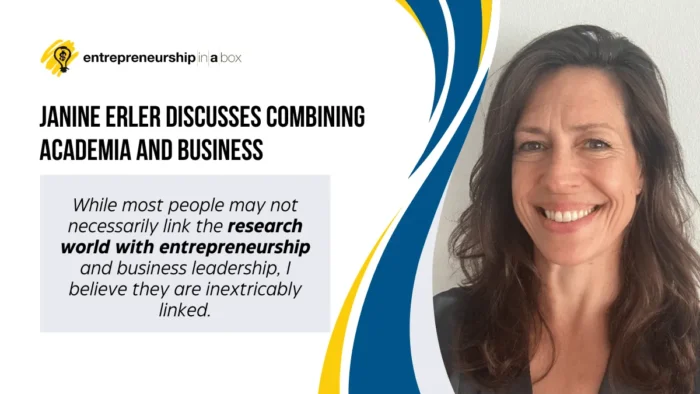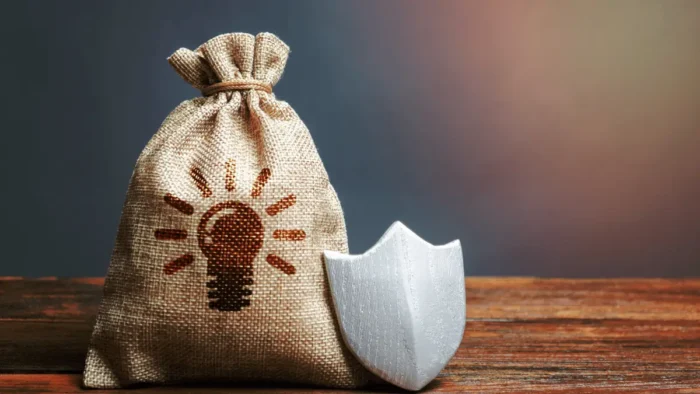The product life cycle is a concept that you can apply to your products and services to improve your innovation system. This concept claims that there will always be the birth and death of a product or service. Between these two processes, there are the remaining stages that a product goes through. However, nowadays, even the most innovative product rapidly gains competition.
The most popular concept for the product lifecycle is one consisting of 4 stages: (1) introduction of the product, (2) growth, (3) maturity, and (4) decline. However, this concept is debatable since some stages are missing. Before the stage of introduction, it should be a stage of product development. Also, after the stage of maturity, usually, there is a long stage of stagnation. This is actually the time when the product is in its position during its lifecycle.
And finally, although the decline of the product might last long, it should be ended by the decision to stop producing that product, which can be represented with the last stage: elimination.
Product Life Cycle Concept
The extended concept of product lifecycle consists of 7 stages: development, introduction, growth, maturity, stagnation, decline, and elimination.
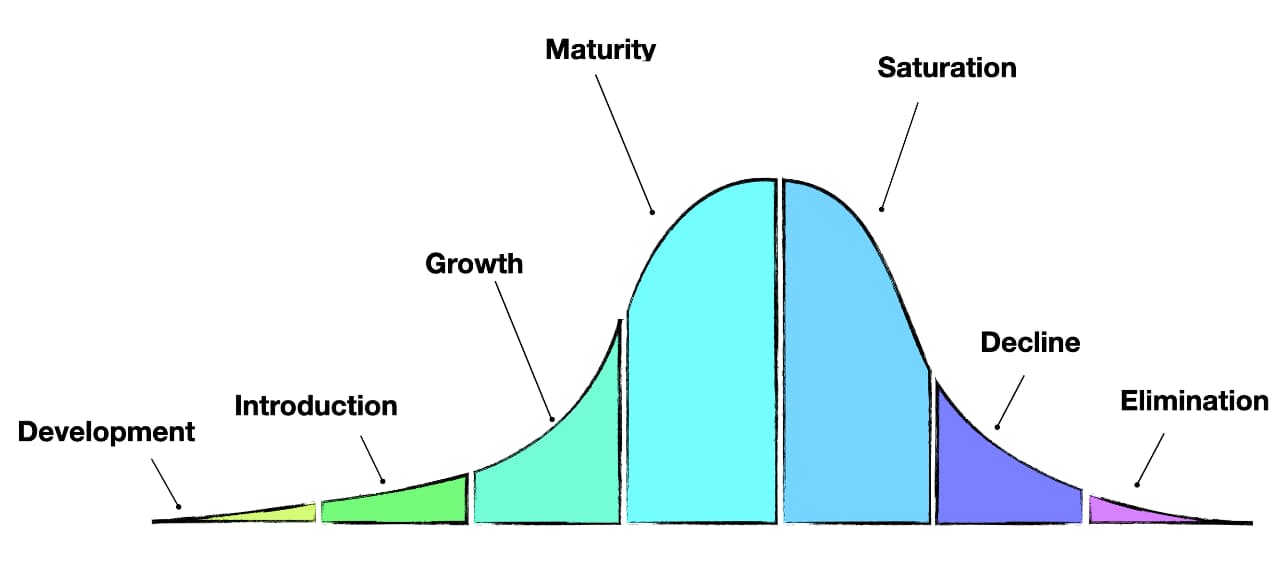
During these exponential times of change, the product life cycle continues to become shorter and shorter. Having innovative and creative people capable of rapidly developing new products, services, and processes becomes a primary imperative for success.
As you can see from the figure, here we use four stages:
- introduction,
- growth,
- maturity, and
- decline.
In this case, the introduction stage covers both introduction and development like in the extended concept. The maturity stage here also obtains the stagnation stage, and the decline stage covers elimination as in addition to only the decline stage.
Introduction stage in the Product Life Cycle
If we look at the sales quantity and the product’s profitability, we can see that sales growth at the introduction stage is slow, and costs are higher, so the company will make a loss at this stage.
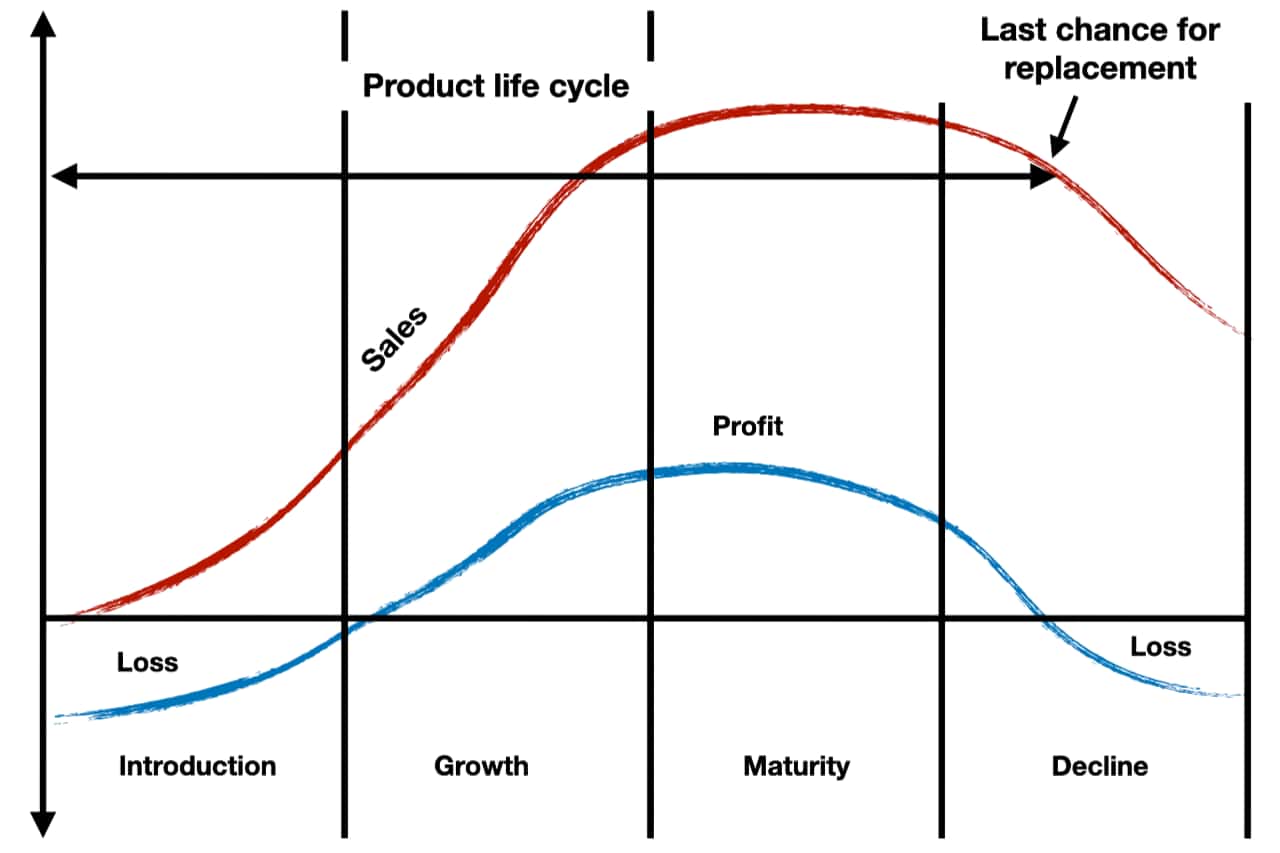
Growth stage in the Product Life Cycle
When we come to the growth stage, the sales start rapidly to grow and so profitability. At this stage, the company starts to profit from the newly introduced product on the market.
Maturity stage in the Product Life Cycle
At the maturity stage, the sales start to normalize, which is the most profitable period of the product life cycle. At the end of this stage, we can start noting that the sales slowly will start to decline, and this is the point that will tell us it is time for the next stage of the product life cycle, and it is the decline stage.
Decline stage in the Product Life Cycle
At the decline stage, sales quantity starts to decline rapidly, which significantly impacts profitability. After some time, when the product is at this stage, the company will lose money, or this product will start to bring losses.
Last Chance for Replacement
So, at the point of the last chance for replacement, the company will need to start the new cycle with new product development or adjust to an existing product to increase the product life cycle’s lifespan.
Let’s see what we can do with this information.
At the decline stage, sales quantity starts to decline rapidly, which significantly impacts profitability. After some time, when the product is at this stage, the company will lose money. So, at the point of the last chance for replacement, the company will need to start the new cycle with new product development or adjusts to an existing product to increase the product life cycle’s lifespan.
As we can see from the figure below, innovation is the process that will improve or increase the product life cycle’s lifespan.
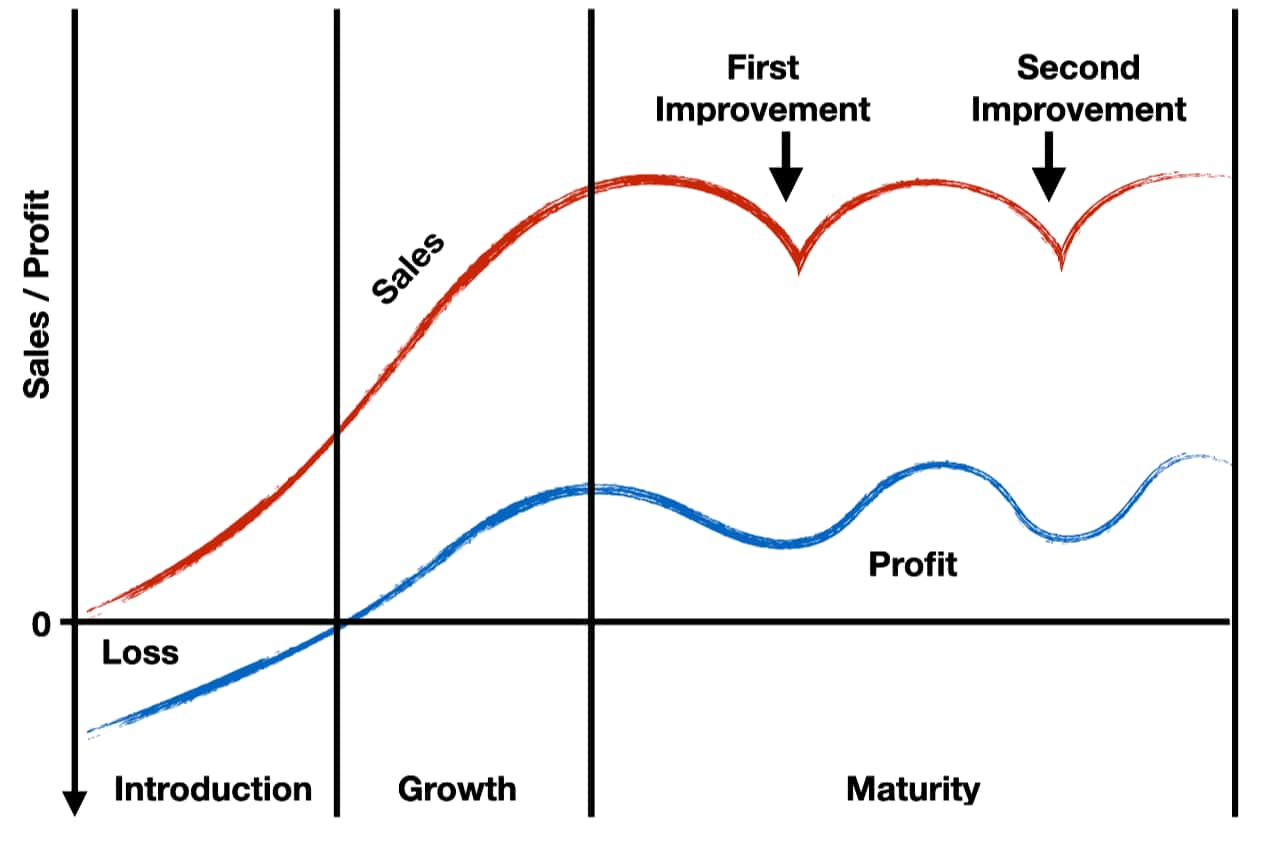
When we come to the point of the last chance for replacement, instead of total replacement of this specific product line, we can improve the products, add new features, new design elements, or add some new values to the customers. These are improvements or incremental innovations for existing products. As you can see, at the stage of maturity, when the sales and profit start to decline, with the improvements, we will expand the time in which the product will stay in the maturity stage. In such a way, we are not allowing transition into the next stage or decline stage.
Again, we can repeat the improvements, so we will work on expanding the product’s position inside the maturity stage.
Market Positioning Strategies
At several points on the product life cycle, the companies will need to force consumers’ mental shift.
- The first point is the inside introduction stage, where we want to cross the gap between the introduction and growth stage.
- The second point is when the product comes to the maturity stage or has the highest income. The company’s job here is to expand the stay of the product in this stage.
According to the HBR article, you can use three positioning strategies to force a customer’s mental shift.

Reverse positioning strategy
Reverse positioning requires removing some “great” product attributes that customers expect when they are at the maturity stage while adding new ones. This strategy assumes that although customers want something more, they still don’t want an unlimited number of new features. Using this positioning strategy, you will need to remove some product features that are usual for such a product. Also, you will need to add some new features after removing all the usual ones. This unique blend of features will allow moving the product to a new competitive position and go from maturity into a growth stage on the product life cycle curve.
For example, when your product comes to the maturity stage, you will need to analyze your product and the market deeply. When I talk about the market analysis here, I need to mention that I think not only about your current market but also analysis of other possible markets where you want to expand your product life cycle with this strategy.
Before you start with the implementation, ask yourself the following questions:
- What are the product features that are the most competitive on the market today? Can I remove some of them?
- What will be the features that other markets will need, or what are the features for the future? Can I add them to the current product?
Breakaway positioning strategy
Another positioning strategy here is called the breakaway positioning strategy. This strategy combines the current product with entirely different other products. While reverse position-ing allows expanding the time for a product’s survival on the market, it is still the same product. The products are not in the same category with a breakaway positioning strategy because they are mixed with a different one. We don’t talk here only about the product itself, but also about the total offer that follows these products. For example, we can take other products’ designs, some performance characteristics, business models, or in most cases, other product features. Simply you mix different values from other products inside your product. By mixing these variables, you can change how your current and future customers see your product and go back from maturity into the growth stage.
Before you start with the implementation of this strategy, ask yourself the following questions:
- Are there other products on the market that their features can become part of my product’s features? What is the value that these features combined with mine can bring for another market?
- Are there some other markets where my product’s features can be valuable for customers? What will they get with this mixture?
Stealth positioning strategy
The third positioning strategy is the stealth positioning strategy used at the introduction stage of the product life cycle. With this strategy, you will offer your product to skeptical customers with the set of features they want, but without mentioning future ideas about the development of the product. For example, with this strategy, you target one market segment but to allow other future features related to a different market. Using this strategy, you can quickly get your products into the big market and gradually add features from other markets.
Before you start with the implementation of this strategy, ask yourself the following questions:
- What product can I offer in enough big markets so I can quickly succeed?
- Or, what will be some future features that will change the nature of the product and come from other industries and markets?
What We Can Learn From Product Life Cycle?
- The product life cycle requires continuous innovation. Yes, this is the never-ending cycle that will require support from your innovation system.
- Different product lines will have a different product life cycle. If you have different lines of the same product, you can not accept that they will have the same product life cycle.
- The difference in product life cycle inside one product line is based on the sales quantity.
- The continuous decline in the sale is a sign that there is a time for something new.

